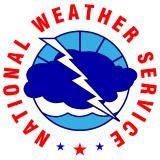For the latest forecasts and critical weather information, visit weather.gov.
Southeast Climate Monthly Webinar: September 27, 2022
Temperatures and precipitation were variable across the region this past month, with most of the region exhibiting slightly above-average temperatures and below-average rainfall. Streamflows are currently near normal across most of the region. Pockets of moderate drought have returned to northeastern North Carolina and southeastern Virginia. Hurricane Fiona resulted in major impacts in Puerto Rico and the U.S. Virgin Islands. Dry conditions in the last month have helped farmers with farm work and harvest.
Looking ahead: Over the next 3 months, temperatures are expected to be above average across the region; precipitation is expected to be below average across much of South Carolina, Georgia, Alabama, and northern Florida, with equal chances of wetter or drier conditions in North Carolina, Virginia, and southern Florida. In the near term, Hurricane Ian will likely cause a period of higher flows and flooding across parts of the Southeast. Over the next three months, there is a low chance of flooding for the interior Southeast river systems and an increased risk across the Florida peninsula with the risk of tropical systems. La Niña is expected to continue through the winter. Drought is not expected to develop over the next few months. NOAA is still predicting an above-average Atlantic hurricane season—stay prepared!
Check out this month’s special presentation, “Modernizing How You Access Water Data," to learn about the updated NextGen Monitoring Location Pages and NextGen WaterAlerts.
About This Webinar
The Southeast Climate monthly webinar series is hosted by the Southeast Regional Climate Center, the National Integrated Drought Information System (NIDIS), and the NOAA National Weather Service. These webinars provide the region with timely information on current and developing climate conditions such as drought, floods, and tropical storms, as well as climatic events like El Niño and La Niña. Speakers may also discuss the impacts of these conditions on topics such as agriculture production, water resources, wildfires, and ecosystems.






